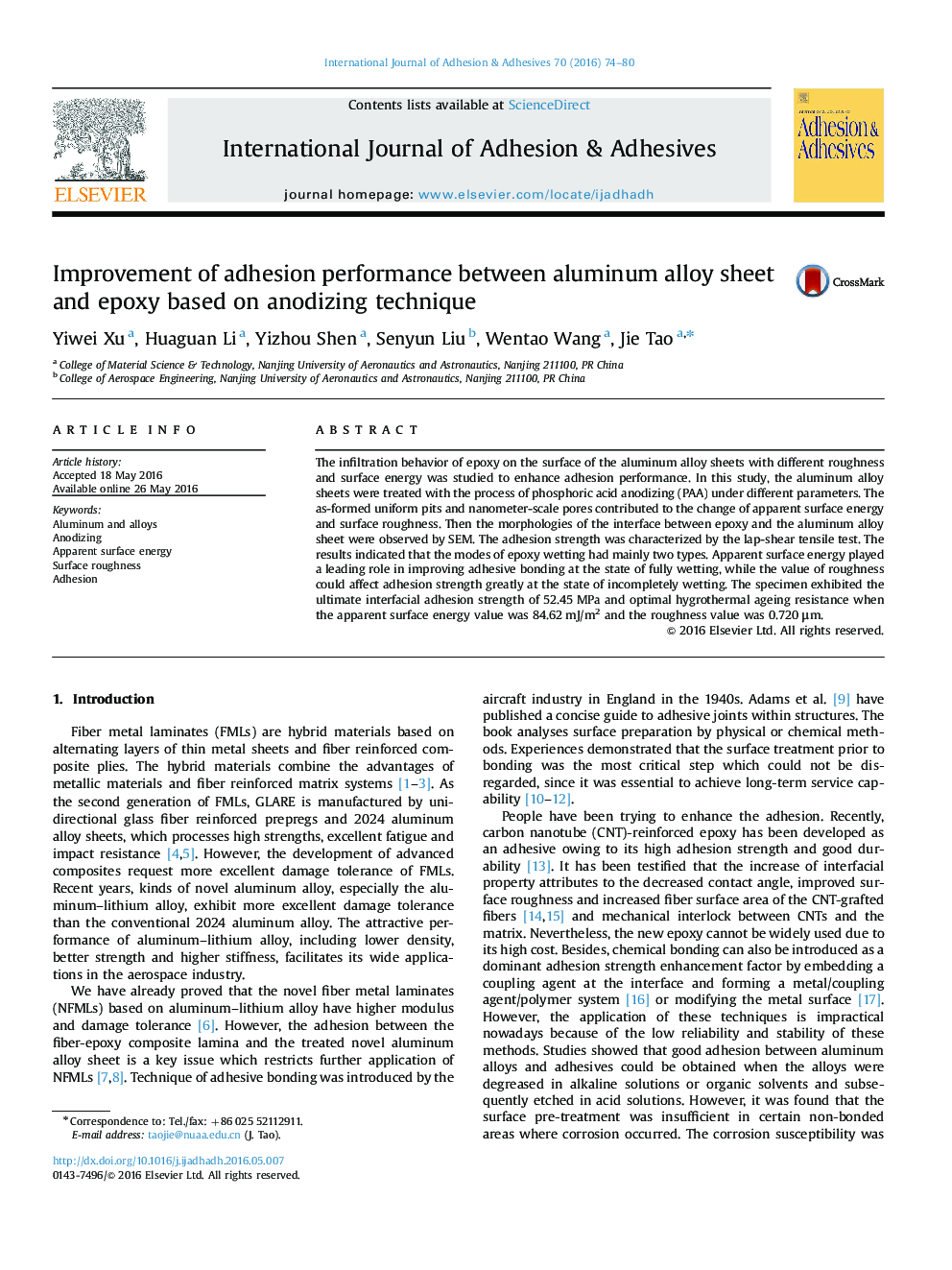| Article ID | Journal | Published Year | Pages | File Type |
|---|---|---|---|---|
| 776031 | International Journal of Adhesion and Adhesives | 2016 | 7 Pages |
The infiltration behavior of epoxy on the surface of the aluminum alloy sheets with different roughness and surface energy was studied to enhance adhesion performance. In this study, the aluminum alloy sheets were treated with the process of phosphoric acid anodizing (PAA) under different parameters. The as-formed uniform pits and nanometer-scale pores contributed to the change of apparent surface energy and surface roughness. Then the morphologies of the interface between epoxy and the aluminum alloy sheet were observed by SEM. The adhesion strength was characterized by the lap-shear tensile test. The results indicated that the modes of epoxy wetting had mainly two types. Apparent surface energy played a leading role in improving adhesive bonding at the state of fully wetting, while the value of roughness could affect adhesion strength greatly at the state of incompletely wetting. The specimen exhibited the ultimate interfacial adhesion strength of 52.45 MPa and optimal hygrothermal ageing resistance when the apparent surface energy value was 84.62 mJ/m2 and the roughness value was 0.720 μm.
